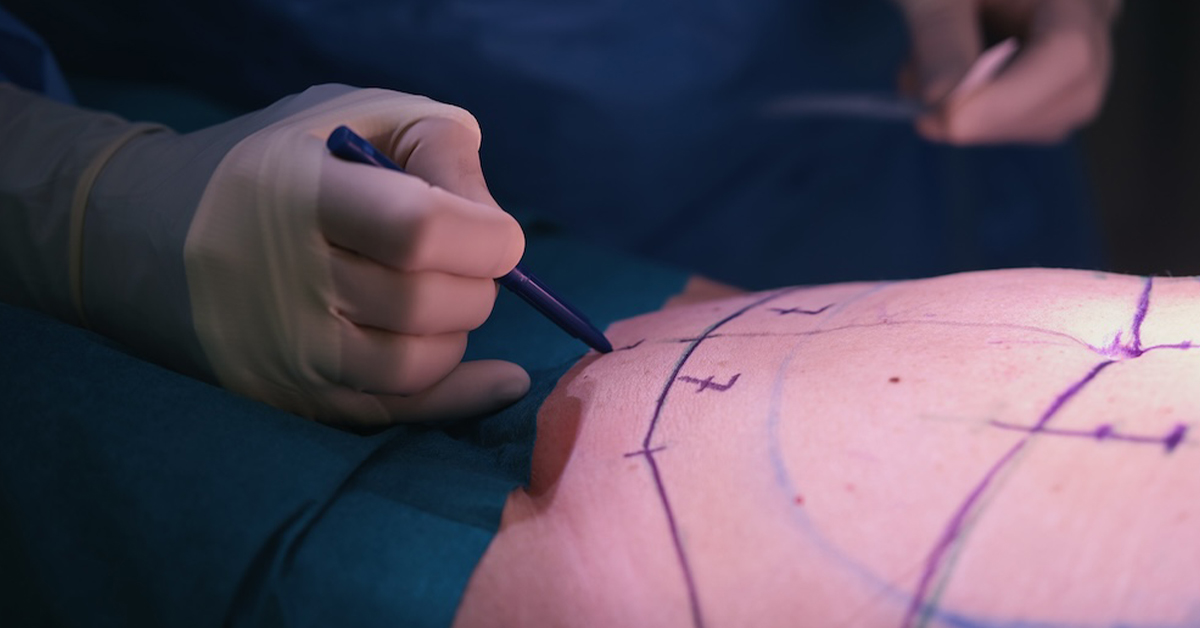Understanding Blood Clots After Surgery: Risks & Prevention
Surgery increases the risk of developing blood clots, known as deep vein thrombosis (DVT), and understanding the risks and prevention strategies is crucial for a safe recovery. Certain surgeries, such as knee or hip replacements, peripheral and coronary artery bypass, as well as surgeries to remove cancer or perform neurosurgery, increase the risk of DVT and pulmonary embolism (PE), which can be life-threatening. Other factors that increase the risk include long procedures, specific anesthesia types, smoking, personal or family history of DVT, obesity, pregnancy, certain medications, and certain types of cancer.
Blood clots after surgery can form due to immobility, slow blood flow, and substances released during the surgical procedure. Symptoms of DVT or pulmonary embolism PE include pain, swelling, warmth, redness in the leg, visible veins, shortness of breath, coughing up blood, and chest pain.
To prevent blood clots after surgery, it is important to quit smoking and maintain a healthy weight. In the hospital, healthcare providers may recommend blood thinners, gentle exercises, leg lifts, squeezing calf and thigh muscles, physical therapy, compression stockings, and the use of compression devices. After leaving the hospital, it is crucial to continue with prescribed medications, wearing compression stockings, performing gentle exercise, and following healthcare providers’ instructions regarding activity levels.
Precautions can be taken before surgery to minimize the risk of blood clots, including providing an accurate medical history, informing healthcare providers about medications, and making lifestyle changes such as regular physical activity, smoking cessation, and weight loss. Thrombolytic medications may be considered for high-risk patients. Immediate post-surgery prevention measures include improving circulation with compression devices, elevating arms and legs, wearing compression stockings, moving around as soon as possible, and potentially taking blood thinners.
It is important to be aware of the symptoms of a blood clot after surgery, as prompt medical attention may be necessary. The risk of blood clots after surgery is increased due to immobility, foreign matter in the bloodstream, and the body’s response to the surgical procedure.
- Surgery increases the risk of developing blood clots, specifically deep vein thrombosis (DVT).
- Risks for blood clots after surgery include specific surgeries, long procedures, anesthesia types, smoking, personal or family history of DVT, obesity, pregnancy, certain medications, and certain types of cancer.
- Symptoms of DVT or PE include pain, swelling, warmth, redness in the leg, visible veins, shortness of breath, coughing up blood, and chest pain.
- Prevention strategies include quitting smoking, maintaining a healthy weight, taking prescribed medications, wearing compression stockings, performing gentle exercise, and following healthcare providers’ instructions.
- Precautions before surgery can minimize the risk of blood clots, such as providing accurate medical history, informing healthcare providers about medications, and making lifestyle changes.
The Connection Between Surgery and Blood Clots
Surgery, particularly major procedures, can disrupt normal blood flow and increase the risk of blood clot formation, leading to potentially life-threatening complications. During surgery, the body’s natural blood flow can be affected, causing blood to pool or become stagnant, creating an environment conducive to clot formation. Additionally, surgical procedures can trigger the release of substances that promote clotting, further increasing the risk.
DVT (deep vein thrombosis) is a common type of blood clot that can occur after surgery. This occurs when a blood clot forms in the deep veins, typically in the legs. If a clot dislodges and travels to the lungs, it can cause a pulmonary embolism (PE), which is a medical emergency. Certain surgeries, such as knee or hip replacements, peripheral and coronary artery bypass, neurosurgery, and cancer removal surgeries, have a higher risk of DVT and PE.
To minimize the risk of blood clots after surgery, healthcare providers take several preventive measures. These may include the use of blood thinners to prevent clot formation, the utilization of compression stockings or devices to improve blood flow and prevent pooling, and early mobilization or gentle exercises to promote circulation. These interventions are crucial in reducing the risk of blood clots and preventing potentially fatal complications.
| Key Points: |
|---|
| – Surgery can disrupt normal blood flow and increase the risk of blood clot formation. |
| – DVT is a common type of blood clot that can occur after surgery, and it can lead to potentially life-threatening complications if a pulmonary embolism occurs. |
| – Preventive measures such as the use of blood thinners, compression stockings, and early mobilization can help reduce the risk of blood clots after surgery. |
Identifying Blood Clot Symptoms After Surgery
Recognizing the symptoms of blood clots after surgery, such as pain, swelling, and redness in the leg, as well as chest pain and shortness of breath, is crucial for early detection and treatment. Blood clots, specifically deep vein thrombosis (DVT), can develop following surgery due to factors like immobility and surgery-related blood pooling. If left untreated, these clots can lead to life-threatening complications like pulmonary embolism (PE). Being aware of the signs and symptoms can help you seek prompt medical attention and reduce the risk of complications.
One of the common symptoms of a blood clot is pain. If you experience persistent pain or tenderness in your leg, it could be a sign of DVT. Swelling in the affected leg is another red flag to watch for. Additionally, if the leg feels warm to the touch or appears red, it could indicate the presence of a blood clot.
While leg symptoms are commonly associated with DVT, it’s important to be aware of potential symptoms of a pulmonary embolism as well, as these can be life-threatening. Chest pain, especially when accompanied by shortness of breath, coughing up blood, or a rapid heartbeat, should never be ignored. If you experience any of these symptoms after surgery, seek immediate medical attention to rule out any blood clot complications.
It’s important to note that not all blood clot symptoms are the same for everyone. Some individuals may experience mild symptoms or no symptoms at all, making it even more crucial to communicate any concerns with your healthcare provider. They can evaluate your risk factors and provide appropriate guidance on monitoring and managing the potential threat of blood clots after surgery.
Preventing Blood Clots After Surgery
Taking proactive measures, such as using blood thinners, wearing compression garments, and engaging in specific exercises to promote blood flow, can significantly reduce the risk of blood clots after surgery. These prevention strategies are crucial to ensuring a safe recovery and minimizing complications. By understanding the importance of blood clot prevention and implementing these measures, you can protect your health and well-being.
One important aspect of preventing blood clots after surgery is the use of blood thinners. These medications help to prevent the formation of clots by reducing the blood’s ability to clot. Your healthcare provider may prescribe these medications, and it is vital to take them as directed. Blood thinners can be administered orally, through injections, or via IV Intravenous, and their dosage and duration will vary depending on your individual circumstances.
In addition to blood thinners, wearing compression garments can help in preventing blood clots after surgery. Compression stockings or sleeves, which are tight-fitting garments, improve blood flow by squeezing the veins and promoting circulation. It is important to wear these garments as instructed by your healthcare provider, as they can significantly reduce the risk of clot formation in the legs.
Engaging in specific exercises to promote blood flow is also crucial in preventing blood clots after surgery. These exercises, such as ankle pumps, leg lifts, and calf muscle contractions, help to stimulate blood circulation in the legs. Moving and flexing your muscles regularly will help prevent blood from pooling and reduce the risk of clot formation. Your healthcare provider or physical therapist can provide you with specific exercises tailored to your needs and recovery process.
| Prevention Measures | Description |
|---|---|
| Blood thinners | Medications that reduce the blood’s ability to clot, thereby preventing the formation of blood clots. |
| Compression garments | Tight-fitting garments, such as compression stockings or sleeves, that improve blood flow and reduce the risk of clot formation. |
| Specific exercises | Ankle pumps, leg lifts, and calf muscle contractions that stimulate blood circulation and prevent blood pooling. |
By following these preventive measures, you can take an active role in reducing the risk of blood clots after surgery. Remember to consult with your healthcare provider for personalized recommendations and to adhere to the prescribed treatment plan. Taking these precautions will help ensure a smooth recovery and minimize the potential complications associated with post-surgical blood clot formation.
Precautions and Lifestyle Changes to Minimize Risk
Prior to surgery, taking necessary precautions and making lifestyle changes, along with discussing the use of thrombolytic medications with your healthcare provider, can help minimize the risk of blood clots following the procedure. Surgery itself increases the risk of developing deep vein thrombosis (DVT), a potentially life-threatening blood clot that commonly occurs in the legs. To reduce this risk, it is crucial to address any underlying factors that can contribute to clot formation.
Firstly, providing an accurate medical history to your healthcare team is essential. This includes disclosing any previous blood clotting episodes, personal or family history of DVT, and medications you are currently taking. Your healthcare provider will evaluate these factors and determine if additional precautions or treatments are necessary.
Another important aspect in minimizing the risk of blood clots after surgery is making lifestyle changes. If you smoke, quitting before the procedure is strongly recommended, as smoking increases the risk of clot formation. Additionally, maintaining a healthy weight is crucial, as obesity is a significant risk factor for blood clots. Regular physical activity, such as walking or low-impact exercises, can also help improve blood flow and reduce the risk of clotting.
Thrombolytic Medications
In some cases, your healthcare provider may consider the use of thrombolytic medications to further reduce the risk of blood clots. These medications help dissolve existing clots and prevent the formation of new ones. However, the decision to use thrombolytic medications will depend on your individual risk factors and other aspects of your medical history. Your healthcare provider will carefully assess the benefits and potential risks before prescribing these medications.
By taking necessary precautions, making lifestyle changes, and discussing the use of thrombolytic medications with your healthcare provider, you can actively minimize the risk of blood clots following surgery. It is important to follow all instructions provided by your healthcare team, both before and after the procedure, to ensure the best possible outcome and reduce the chances of experiencing complications related to blood clots.
| Risk Factors for Blood Clots After Surgery | Lifestyle Changes to Minimize Risk |
|---|---|
|
|
Post-Operative Prevention Measures
Implementing post-operative prevention measures, such as managing blood clot risks, preventing clot formation and reoccurrence, and ensuring a safe and successful surgery recovery, is essential for optimal outcomes. After surgery, the risk of blood clots remains heightened, making it crucial to take appropriate precautions and follow recommended guidelines.
Risks and Prevention
Managing post-op blood clot risks begins with understanding the factors that contribute to clot formation. Immobility is a key risk factor, so it is important to keep moving and engage in gentle exercises to promote blood flow. Physical therapy and leg lifts can also help prevent stagnant blood flow and decrease the chance of clots developing.
In addition to physical activity, utilizing compression devices and wearing compression stockings can aid in the prevention of blood clots after surgery. These devices help improve circulation and reduce the risk of clot formation. It is important to follow healthcare providers’ instructions regarding their use and duration.
| Blood Clot Prevention Measures | Description |
|---|---|
| Regular movement and exercise | Gentle exercises, leg lifts, and physical therapy help improve circulation and prevent blood clots. |
| Compression stockings and devices | These aids improve blood flow and reduce the risk of clot formation. Follow healthcare providers’ instructions regarding their use and duration. |
| Medication adherence | Take prescribed blood thinners as directed to prevent clot formation and reoccurrence. |
Recovery and Follow-Up
Ensure a safe and successful surgery recovery by closely following all instructions from healthcare providers. This may include taking medications, such as blood thinners, as prescribed. Adhering to the recommended timeline for medication use is crucial in preventing blood clot reoccurrence.
Regular check-ups and follow-up visits with healthcare providers are essential to monitor progress and address any concerns. These appointments also provide an opportunity to discuss any changes in symptoms or overall well-being, ensuring appropriate intervention if necessary.
By implementing post-operative prevention measures, individuals can minimize the risk of blood clots, support a successful recovery, and ultimately achieve optimal outcomes after surgery.
Conclusion
By understanding the risks, symptoms, and prevention strategies associated with blood clots after surgery, patients can actively participate in their recovery journey and improve their overall health outcomes.
Surgery, particularly major procedures, poses an increased risk of developing deep vein thrombosis (DVT), a potentially life-threatening blood clot that commonly forms in the leg. Taking precautions before surgery, such as providing accurate medical history, informing healthcare providers about medications, and making lifestyle changes like regular physical activity, smoking cessation, and weight loss, can help minimize this risk.
After surgery, it is crucial to remain vigilant for any signs of a blood clot, including pain, swelling, warmth, redness in the leg, visible veins, shortness of breath, coughing up blood, and chest pain. Prompt medical attention should be sought if these symptoms arise, as early intervention can prevent complications. Furthermore, implementing post-operative prevention measures such as improving circulation with compression devices, elevating arms and legs, wearing compression stockings, and moving around as soon as possible can also reduce the risk of blood clots.
Patients should follow all instructions from healthcare providers, including taking prescribed medications, wearing compression stockings, performing gentle exercises, and maintaining a healthy lifestyle.
Plastic Surgery in Miami, FL
The first step in getting a Plastic Surgery in Miami is to schedule a consultation with us. If you are interested in learning more, call us now at (305) 406-9055 or schedule a consultation online Now.







